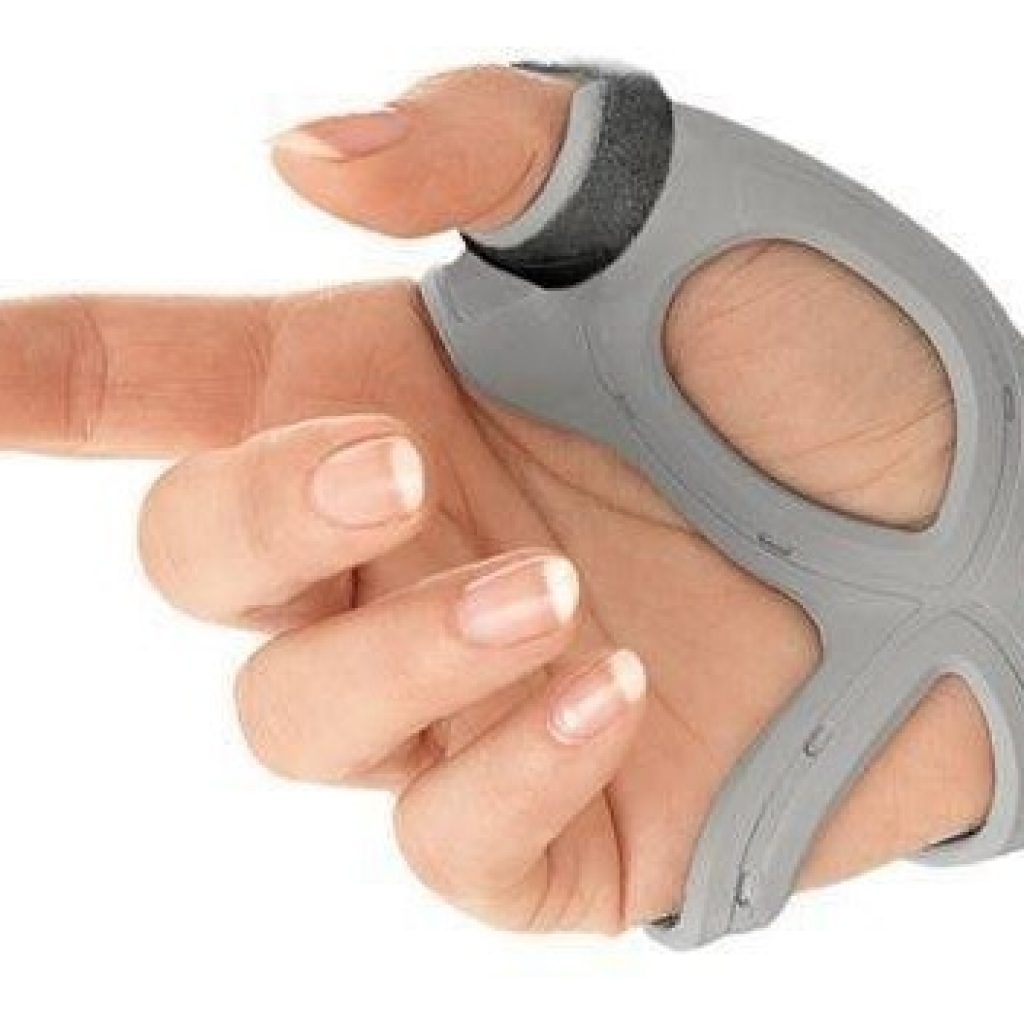Thumbs Up: Thumb Pain and Wearing a Thumb Splint

Feeling pain in your thumb can be a symptom of a possible injury or a developing chronic condition. Depending on the severity of your pain and a doctor’s evaluation, you may need to immobilize the thumb and wear a thumb splint for a certain period of time. But a thumb splint won’t help if you do not wear it properly.
WHAT CAN CAUSE THUMB PAIN?
Activities such as sports can cause a simple jammed thumb injury. Wrapping the thumb after injury will help apply compression to help reduce swelling and prevent against re-injury as you get back into sports. Carpal tunnel syndrome also can cause thumb pain and impacts your nerve, sometimes spreading symptoms to your fingers and the base of your thumb.
If your sprained thumb worsens or does not heal, you may have a severe injury such as a fracture, broken bone, nerve damage or a serious ligament tear. You should see your doctor for a proper diagnosis and a treatment plan. A thumb that “clicks” when you move it or is stuck in a bent position and then snaps straight, can be a trigger finger caused by inflammation in the tendons.
Another common cause of thumb pain is thumb arthritis, which typically starts at the base of the thumb and causes symptoms when you grip, pinch or open an object. Arthritis causes inflammation and cartilage loss within the thumb joint.
Thumb pain caused by overuse is known as thumb tendonitis, or De Quervain’s Tendinosis. The pain may move up to your forearm.
HOME REMEDIES FOR THUMB PAIN
Stretching a sore thumb, cold therapy and rest can relieve pain caused by overuse. If your thumb is not injured, moving your thumb forwards and backwards can help more quickly. If your thumb is swollen, you can treat the swelling with R.I.C.E. – rest, ice, compression, and elevation. Resting helps prevent further injury. Ice reduces swelling and inflammation. Compression and elevation also aid with swelling as well.
WHAT IS A THUMB SPLINT?
A thumb splint is usually made from breathable fabrics with metal or plastic inserts to support the thumb. It helps relieve pain caused by injury or arthritis and restricts movement before and after surgery. Splinting helps immobilize your thumb for a quicker recovery while forcing you to rest your thumb. Your doctor may splint your thumb for several weeks for serious injuries. It may take a while to get used to your splint because it restrains joint movement. It should not be uncomfortable to wear or restrict your circulation.
HOW DO I PROPERLY USE MY THUMB SPLINT?
If you do not wear a thumb splint properly, you may prolong your healing time. Here are several tips to benefit from correct use:
- When you put on the thumb splint, the long side should rest along the outside of your thumb and along your inside wrist and forearm.
- Secure the straps around your thumb and wrist so they fit comfortably and do not restrict circulation. Contact your physician if the splint feels painful.
- Remove the splint before you bathe or got to sleep.
- When performing activities that require thumb use or as instructed by your doctor, wear the splint.
- Gently exercise your thumb if it is stiff after removing the splint.
- Keep the splint out of direct sunlight and away from heat when you are not wearing it.
PURCHASING A THUMB SPLINT
There are many types of thumb supports to treat a variety of symptoms. To achieve the best results, select a quality thumb splint that suits your needs whether you will use it to heal or prevent injury. Carmichael’s locations carry a selection of trusted name brand thumb splints to help people of all ages recover from minor to significant thumb injuries. Contact or visit us soon to see how the products we have can help immobilize your thumbs. We promise our service is worth two thumbs up!




 Accredited/Certified by The Joint Commission
Accredited/Certified by The Joint Commission